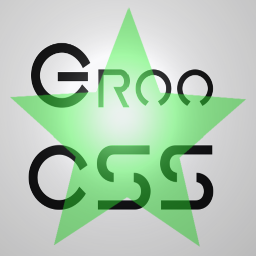def css = GrooCSS.process(new Config(addWebkit: false, addMoz: false, addOpera: false)) {
keyframes('bounce') {
40 % {
translateY(-30.px)
}
60 % {
translateY(-15.px)
}
frame([0,20,50,80,100]) {
translateY(0)
}
}
}
GrooCSS
Code CSS in Groovy
Keyframes, Transitions, and Transforms DSL
GrooCSS includes support for @Keyframes, Transitions, and transforms (like translateX).
Keyframes
You create keyframes in GrooCSS using the keyframes(selector, Closure) method (there’s also a "kf" alias).
Produces:
@keyframes bounce {
40%{transform: translateY(-30px);}
60%{transform: translateY(-15px);}
0%, 20%, 50%, 80%, 100%{transform: translateY(0);}
}Transitions
Transitions are supported like any normal style property OR with a special DSL which takes a Closure (or multiple Closures).
For example:
a%hover {
transition { all 1.s }
}This would transition all properties that are changed for a:hover over 1 second.
If you want to supply the easing function, you can. Since command chains in Groovy require pairs to work (a method call and a value) you also need to provide the "delay" value (which can be zero). For example:
a%hover {
transition { all 1.s ease 0 }
}You can also supply multiple closure to support multiple transition values, eg:
a%hover {
transition { color 1.s ease 0 } { background 2.s }
}The correct CSS will be output.
Last updated: 31 July 2019